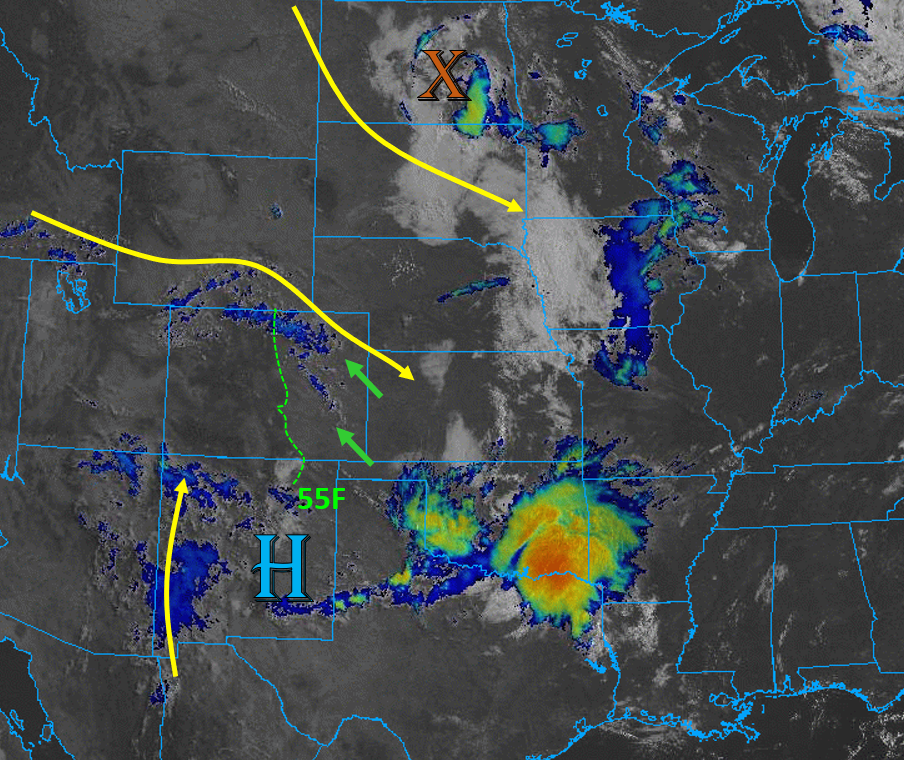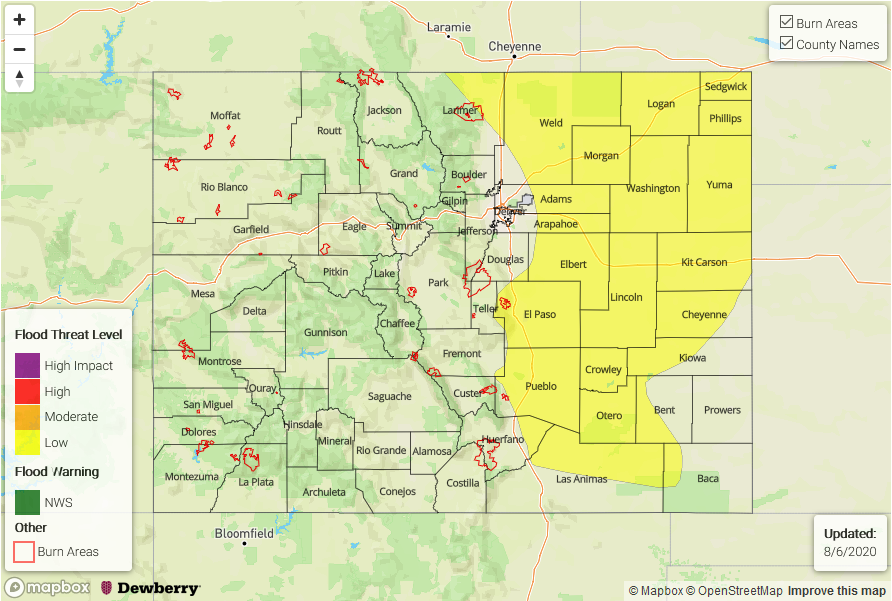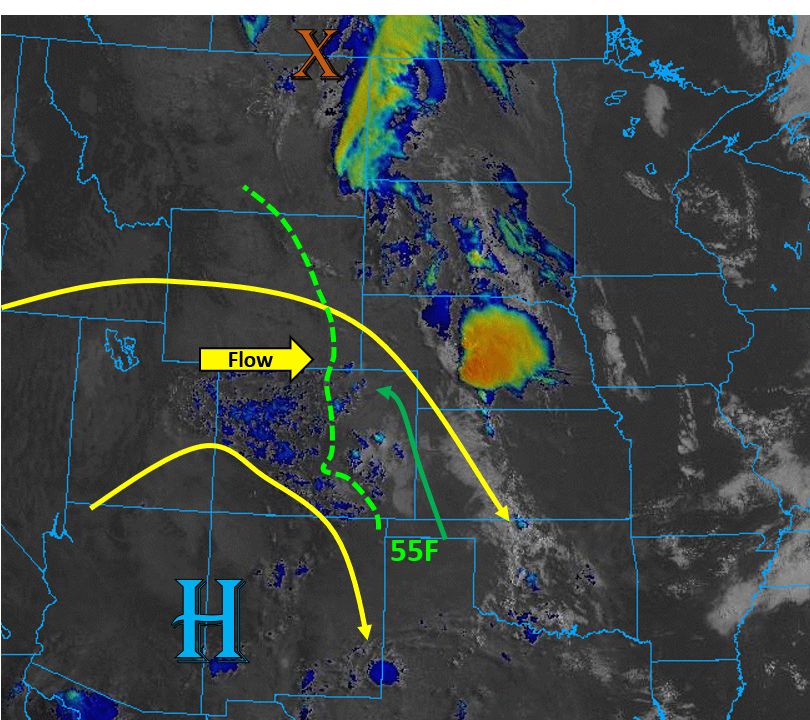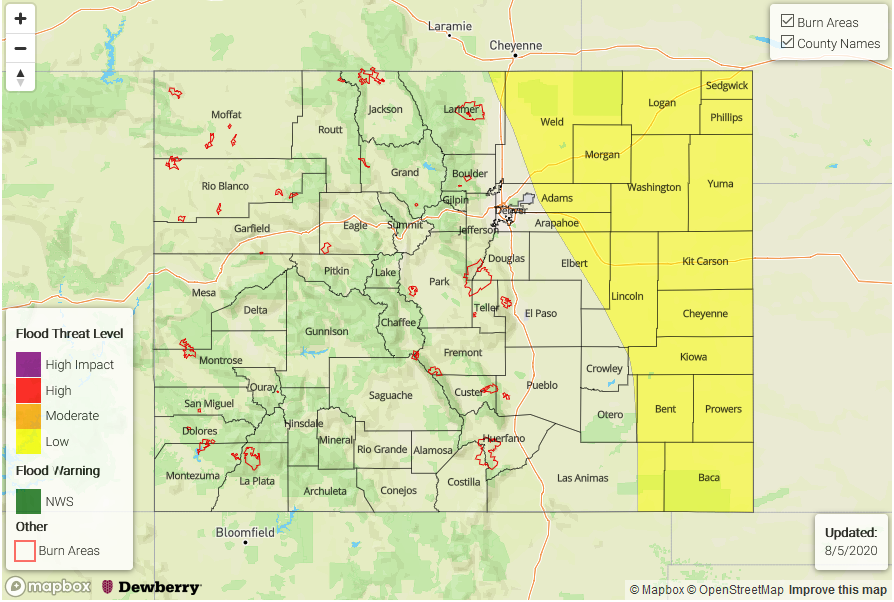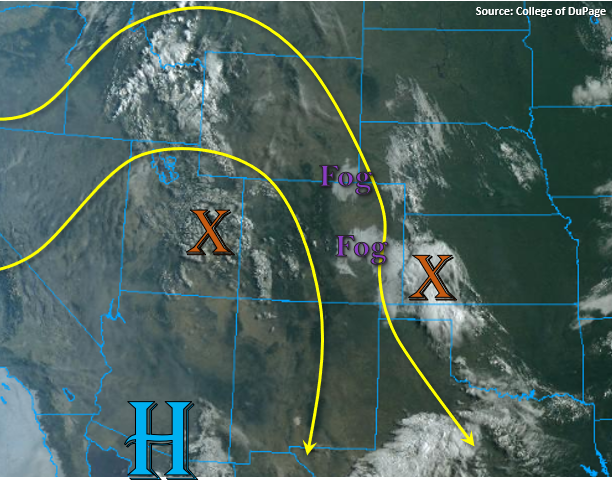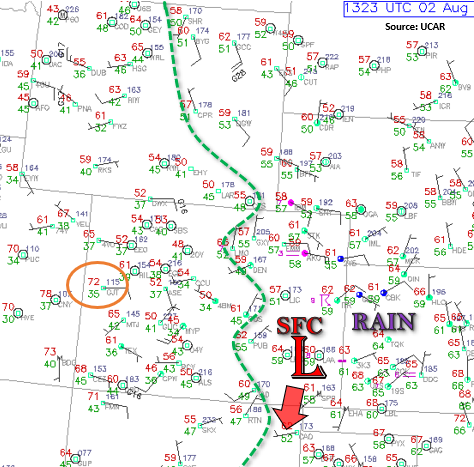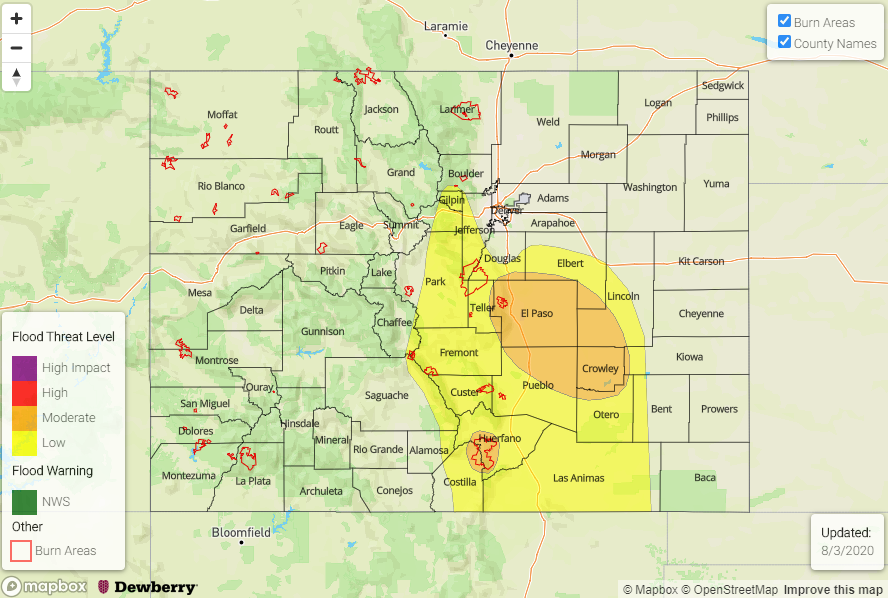Issue Date: Wednesday, August 5th, 2020
Issue Time: 10:20AM MDT
— A LOW flood threat has been issued for the Northeast Plains, Palmer Ridge, Southeast Plains, northern Urban Corridor, and northern/southeast portions of the Front Range
Today’s weather setup is very similar to yesterday’s as Colorado is situated between a high pressure ridge and a passing shortwave to the northeast (see satellite graphic below). This high pressure center has shifted slightly east today, which is bringing some mid-level moisture from the south over western New Mexico, as seen by the clouds (blue) in the satellite image below. This moisture will slowly push into the southwestern part of the state today and increase chances for clouds and some showers over the San Juan Mountains, but 30Fs surface dew points over the area this morning indicate rainfall will be light and isolated.
The bigger story today is the severe thunderstorms that are expected to track over the plains of eastern Colorado this afternoon. The height gradient between the high pressure ridge and the passing shortwave trough is creating some moderate mid-level flow over the north/northeast part of Colorado that is associated with an upper-level jet streak. This is causing some lift and generating clouds and showers (blue on the image below) over the northern and northeast part of the state this morning. This upper-level flow will continue over the northeastern part of the state today, which will increase wind shear and favor more organized thunderstorms. This stronger upper-level flow will also push storms off to the east quicker, but heavy rainfall is still expected under the stronger storm cores.
As the sun heats up the surface today, low pressure axis will develop over the high terrain and create upslope east-southeasterly surface winds for much of the plains. Surface dew points will remain in the mid to upper 50Fs for most of the lower, eastern elevations with higher 60Fs forecast for the far eastern plains as the moisture will continue to be banked up against the eastern mountains (see graphic below). This will help increase instability over the area this afternoon, and set the stage for heavy rainfall. However, due to slower upper-level flow farther south (less favorable upper-level dynamics), storms that can potentially break the cap over the Southeast Plains should be more isolated in nature, but still capable of producing high rainfall rates. So, the Low flood threat has been extended south.
The highest chances for storms will be over the Northeast Plains and Palmer Ridge today. Max rain rates up to 1.6 in/hr are possible with the storms, so a Low flood threat has been issued. Strong winds up to 65 mph are possible with the severe storms, especially over the Northeast Plains, and as storms develop further west, another round of severe hail up to (2 inch in diameter) is also possible.
Today’s Flood Threat Map
For more information on today’s flood threat, see the map below. Hover over the threat areas for more details, and click on burn areas to learn more about them. For Zone-Specific forecasts, scroll below the threat map.
Zone-Specific Forecasts:
Northeast Plains, Southeast Plains, Palmer Ridge, Raton Ridge, Urban Corridor, Front Range, & Southeast Mountains:
Storms will fire around noon over the northern Front Range, Palmer Ridge, and Urban Corridor, and as they make their way east, they could become severe. There is also an increased chance for a squall line over the Northeast Plains, so strong, damaging winds will be possible. Back west, severe hail (up to 2 inches) will be possible. Max rain rates with storms over the plains this afternoon are 1.6 inches per hour, so a Low flood threat has been issued for the Northeast Plains, northern Urban Corridor, northern Front Range, Palmer Ridge, and portions of the Southeast Plains. Rain rates up to 1 in/hr are more likely further west along the Front Range.
A lower chance of storms is expected further south over the Southeast Plains, but a few isolated strong storms could fire over the western part of the area if they can break through the cap with help from other storms’ outflow boundaries. Max 1-hour rain rates up to 1.6 inches will be possible. With the nocturnal low-level jet along the southeastern border of Colorado, showers and storms may linger over the Southeast Plains into the overnight hours. These storms should be weaker due to limited instability, so flooding is not expected overnight.
Primetime: 12PM to midnight
Grand Valley, Northwest Slope, Northern Mountains, Central Mountains, Southwest Slope, San Luis Valley, & San Juan Mountains:
Mainly sunny for most of the region, but some afternoon clouds and weak showers are possible over the high terrain ridgelines. Best chance for rainfall will be over the San Juan Mountains where rain rates up to 0.1 inches per hour will be possible. Since most of the moisture will be in the mid-levels, the better bet is more cloud cover than wetting rainfall.
Primetime: 12PM to 7PM
